update: After this post was published, Trail Runner Online posted my Q&A with Geoff Roes, “Checking In with Geoff Roes in Juneau.” I hope you’ll check it out too and enjoy!
Two-and-a-half miles into my first run in Alaska, I needed to use my hands to ascend switchbacks and scramble up boulders on Mount Juneau. The trail was so steep that I hesitated to look up at the summit, because tilting my chin high might make me tip back, lose my balance, and tumble like a loose rock into the bay three thousand feet below. A cautious glance over the shoulder revealed the town of Juneau hugging the waterfront, dwarfed by snow-streaked glacial peaks that rose in multiple jagged ridges in all directions.
It was Day One of the Alaska Mountain Ultrarunning Camp hosted by champion ultrarunner Geoff Roes, a course record holder at the Western States and Wasatch 100 milers. He is the guy who earlier this year won the foot race division of the 350-mile Iditarod, which he completed in about a week on hardly any sleep while pulling a sled and traversing snow drifts in minus-40-degree weather. He probably thinks of these miles up the mountain in his hometown the way I think of a weekday jog around Oakland’s Lake Merritt.
Geoff told our group of 13 campers that he normally takes his group on this outing after they had a few days to get used to Alaska mountain running, since the Juneau ridge loop is a bit technical and relatively advanced. But he wanted to do it on our first day because the weather looked promising. He reassured us that we would go slowly and he’d help anyone who felt uncomfortable.
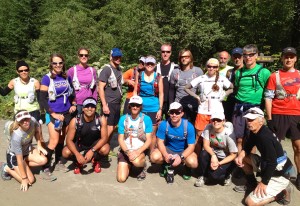
Our camp group with some of the "Geezer" guides. Geoff is kneeling in front, third from left, and I'm standing in back, second from left (click photos to enlarge).
In fact, Geoff was so reassuring, and downplayed the challenge so much, I concluded that the runs we’d do at his camp might feel too easy to accommodate the novice trail runners who were in our group. An art teacher from Connecticut had run nothing more challenging than the well-groomed paths around her community. A trio of young women from New Jersey and New York seemed new to the sport of trail running, and two of them had never even run more than a half marathon.
On the trail, I paused to let Michelle catch up. She was one of the more experienced runners, having run Western States 100 and training for Leadville 100 later this summer. I felt a connection to her because we’re both 43 and have older children, whereas most of the other campers were younger and didn’t have kids.
“I gotta say,” I told her, “I’m glad I’ve run and climbed trails like this before, because I’m feeling the need to tap into that experience to get up this. Some of the other campers must be asking themselves what the hell they signed up for.”
“I was thinking the exact same thing!” she said. We wondered aloud how the Jersey girls would handle the climb.
Above the tree line, the dense woods of spruce and cottonwood gave way to grasses and wildflowers that sprouted around rock outcroppings and peeked through patches of snow. The mountain gushed runoff in numerous waterfalls, which Geoff said was safe to drink so we refilled water bottles from the flow.
About three miles up, we reached the first summit on Mount Juneau. Michelle and I put on our windbreakers to avoid getting chilled and waited for the other runners to reach the top. The expanse of mountains reminded me of the peaks I’ve been fortunate to see during travel around New Zealand, Switzerland, Argentina and the Rockies—except in Alaska, they’re multiplied. The mountain ridges continue as far as the eye can see, layer after layer in all directions.
One by one, the other runners reached the top smiling, looking dazzled. Geoff, who at first can seem subdued and gruff like his gravely voice, smiled widely. He’s actually extremely friendly, funny and generous, and he seemed to soak in the appreciation for his hometown and enjoy seeing this familiar trail through visitors’ eyes.
One of the younger women crested the summit. I half expected her to look spent and upset, but she had the wild-eyed look of someone who just finished a roller coaster ride. In her best Jersey accent, she joked, “I don’t know what the big deal is. It’s just like New Jersey.”
Several local guides who are friends of Geoff ran with us. They’re gray-haired men in their 60s and 70s who form a legendary local running group called “The Geezers.” Hard-bodied and gnarled like old, weathered trees that withstand any windstorm, they scale the mountainside with an innate nimbleness that elite mountain runners aim to emulate. Not wanting to let us linger on the summit too long, two of the Geezers, Bob and Glen, took off without warning, leaping and striding along a ridgeline while I hastened to follow. I couldn’t believe the speed and playfulness of these men who look like grandfathers. One of the campers, John from Alabama, noticed it too and said at one point, “Those old guys run like children, their arms all flailin’.”
I tried to copy and stay close to them as we headed along the fin of a ridge that drops off in either direction, large swaths of snow framing the trail. Running, climbing — I relaxed into a rhythm, amazed by the scenery and the fact that I was on a mountain in Alaska on a weekday, away from my family, making friends with a champion ultrarunner and a dozen runners from the lower 48 (plus a wonderful couple from South Africa).
We reached another summit and looked down to the natural amphitheater that forms Granite Basin. More than three-fourths of the mountainside was covered in snow. Suddenly I felt chilled, not from wind blowing from the Gulf of Alaska but from fear. I don’t like running on snow without poles or traction devices, especially not on a slope as long and steep as any black diamond ski run.
One of the Geezers told me how it’s done: “Avoid the dark snow because that’s a rock underneath. Avoid the light blue snow because that’s a pond underneath. Jump, dig in, and keep your heels in front a’ ya. Got it?”
Like a bobble head, I nodded, shook my head, nodded, shook my head. I did not want to get down the mountain on anything other than dirt. Another local who had come along for the run, a young woman about half my age named Rosie, seemed puzzled by my qualms. “It’s really fun,” she said. “Really.” Like, no big deal.
A Geezer took a running start, leaped and glided. It was the most gutsy yet graceful form of glissading I could ever imagine, each stride extended by the slide of his foot strike on the snow. He made it look so easy.
A couple of other guys from the camp followed. The Geezers and Rosie below called out for us to go for it, and if we fall, just slide on our shorts. Several went ahead of me, glissading a few strides until slipping and sliding unbelievably hard and fast. Michelle, braver than I, started down, and without warning her legs slipped out. She landed on her belly, not her butt, and her shriek bounced off the mountain as her stomach became a sled.
Everyone started going down and hollering along the way. Fear of being left behind trumped my fear of snow. I coached myself, “If they can do it, so can I. Be strong. Be tough. Be …” Whoa!
As my ankles flew skyward, I landed on my butt and slid a couple hundred meters as though I were tobogganing on a luge. The only thing separating the snow from my backside was a thin piece of my nylon shorts that gave me a wedgie. “Am I going to die?” flew through my mind along with improbable phrases such as “glacial diaper rash” and “icy enema.”
Finally I stopped in an angle more of ridicule than repose, laughing with relief. But it wasn’t over. We had to keep getting up, glissading and slipping. Somewhere along that snowy slope, the lesson of the day hit me: Instead of being tough, I had to be loose. Instead of bracing for a fall, I had to be open to embrace whatever the landscape presented.
During the rest of the days and on the trail runs that followed, that epiphany about being more loose than tough helped me shrug off a rolled ankle and to follow others into a murky, muddy swimming hole without hesitation.
When we bushwhacked through a boggy meadow and hop scotched over puddles—each step a squishy, unstable opportunity to fall—I followed the example of Geoff and the Geezers and didn’t feel worried or annoyed that we were off trail. When we traversed a harrowing stretch where an avalanche had washed out the trail, the mountainside gave way under my foot, and my only option to keep from falling into a river canyon was to grab a thorny thistle bush. I grabbed that bush, took the splinters in my palm and started running again.
Geoff didn’t explicitely teach us as much as show us by example. He led us on challenging, awe-inspiring trails that gave us new experiences and made us better equipped to run in the mountains.
On that first day, because of the challenging terrain and because we stopped often to regroup, it took nearly five hours to go slightly farther than 12 miles. The next day, it took about four and a half hours to go 16 miles. But the slow pace was irrelevant. As Geoff wrote in a column earlier this summer:
Here in Juneau there are numerous routes that would be impossible to do faster than 4 or 5 miles an hour. Many of these routes have long stretches that are slower to run than to walk. When this is the case, I walk, and when it is most effective to run, I run. In the end, I cover a particular route in the manner that is the most efficient way to do so. … As I came to open my mind about what it means to run, I began to discover some of the most scenic, challenging, and enjoyable running I have ever seen, even if much of the time I’m actually walking. To someone who lives in a flat, smooth region of the world it might sound like a very strange thing to walk so much of a “run”, but all we’re really doing when we run fast over flat smooth terrain is the same thing we’re doing when we do a rugged mountain run that takes an hour to cover 3 or 4 miles. In both cases, we’re simply taking what the land offers and pushing ourselves quickly and efficiently over the land.
Before and after each run, we shared meals and sat around the lodge, which is part of a Catholic shrine. Geoff rents it from the church for the weeks when he hosts the camp. (This was the fifth camp he’s done since he started it last summer.) Space was tight in the two-story, four-bedroom cabin, with each bedroom crammed with bunk beds. The experience reminded me how much I enjoy meeting new people from different places, and that I don’t mind sharing small spaces. I remembered what it’s like to hang out without feeling like I need to be doing something. I felt what it’s like to be a kid at sleep-away camp.
When I felt like a break from the group or wanted to stretch my muscles after a run, I’d walk down to the water’s edge and marvel at the salmon jumping above the surface of Auke Bay. The slap-slapping of the fish bodies hitting the water mixed with what sounded like deep breathing through a pipe, which came from whales spouting across the bay.
I can’t recall a time in the past couple of years, since we returned from our extended trip, when I felt so relaxed and liberated. In a matter of days I fell in love with this destination and camp experience, full of awe and gratitude for a world-class yet humble runner who decided to invite kindred spirits to experience the mountains that have trained him so well.

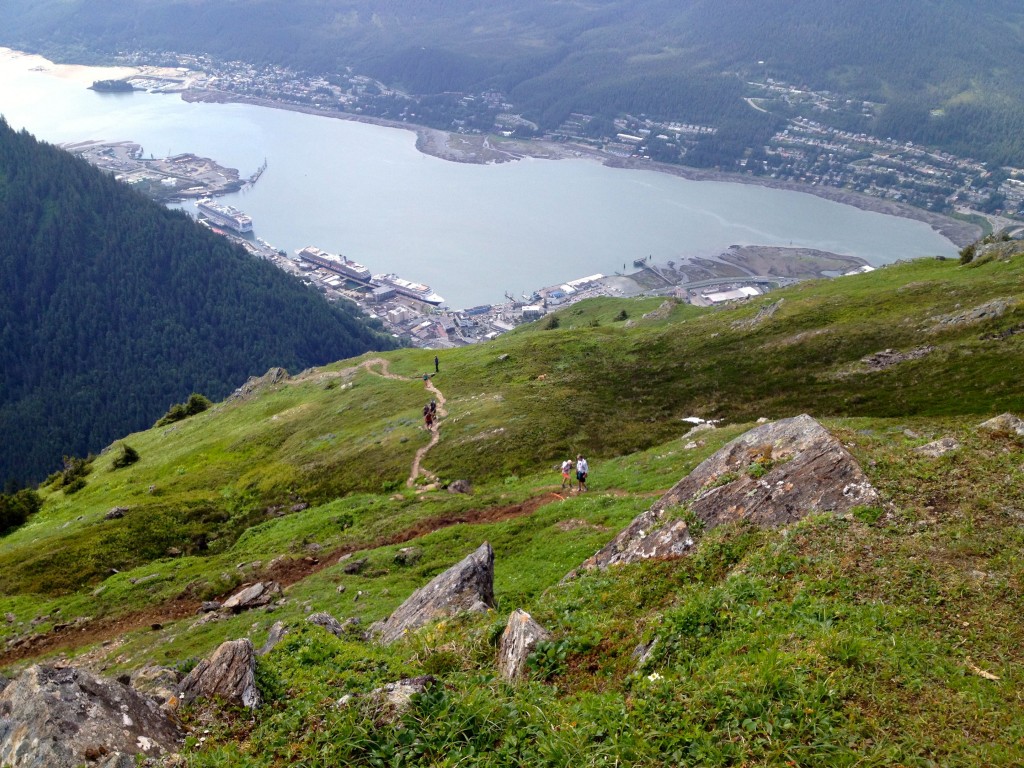
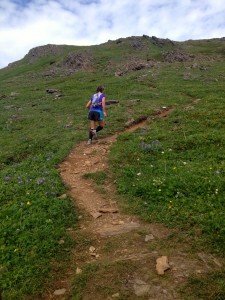
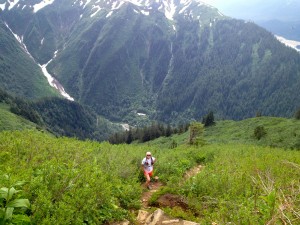
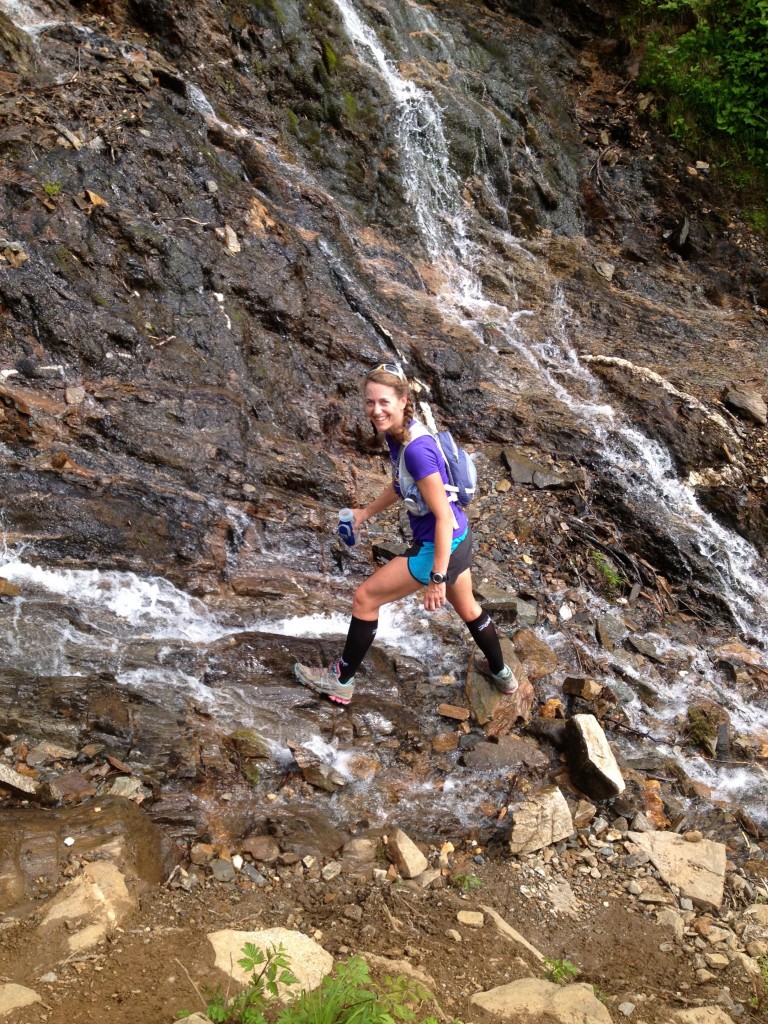
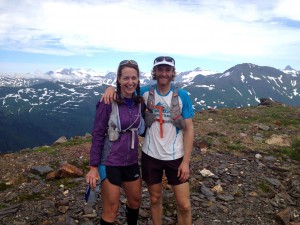
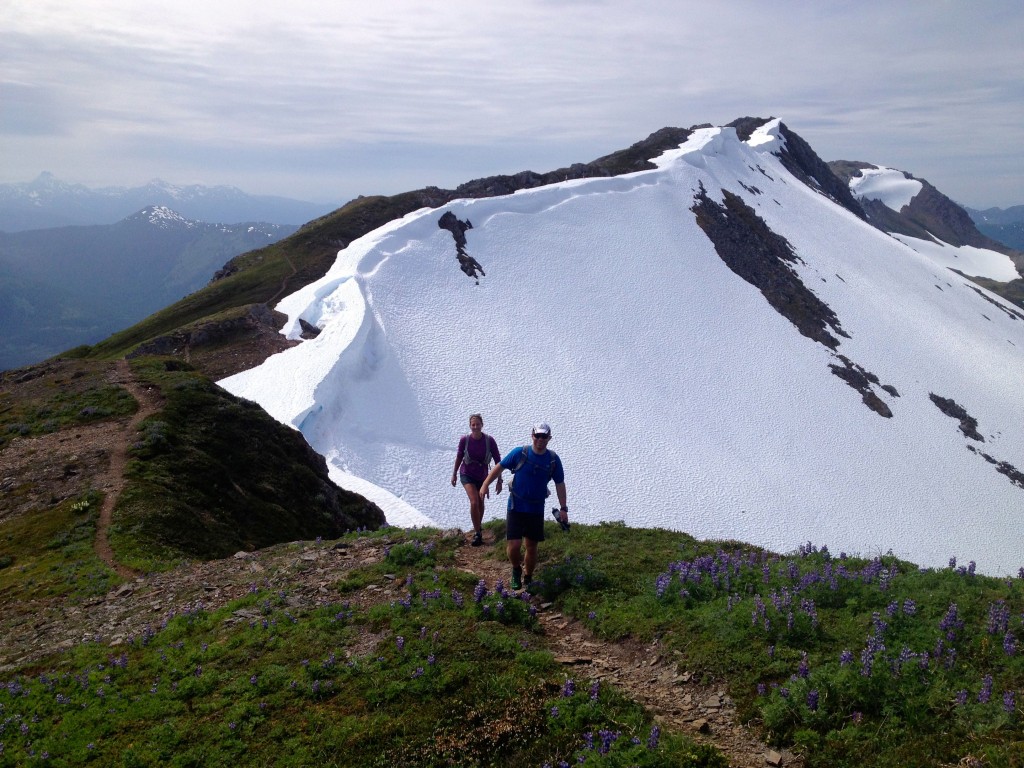
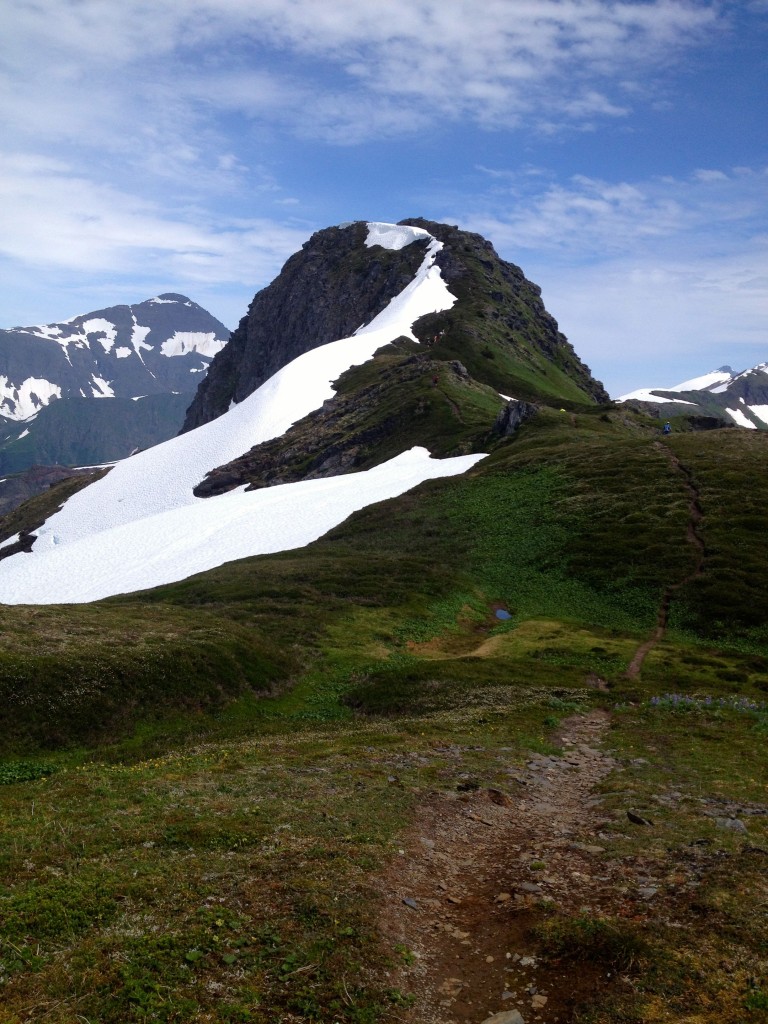
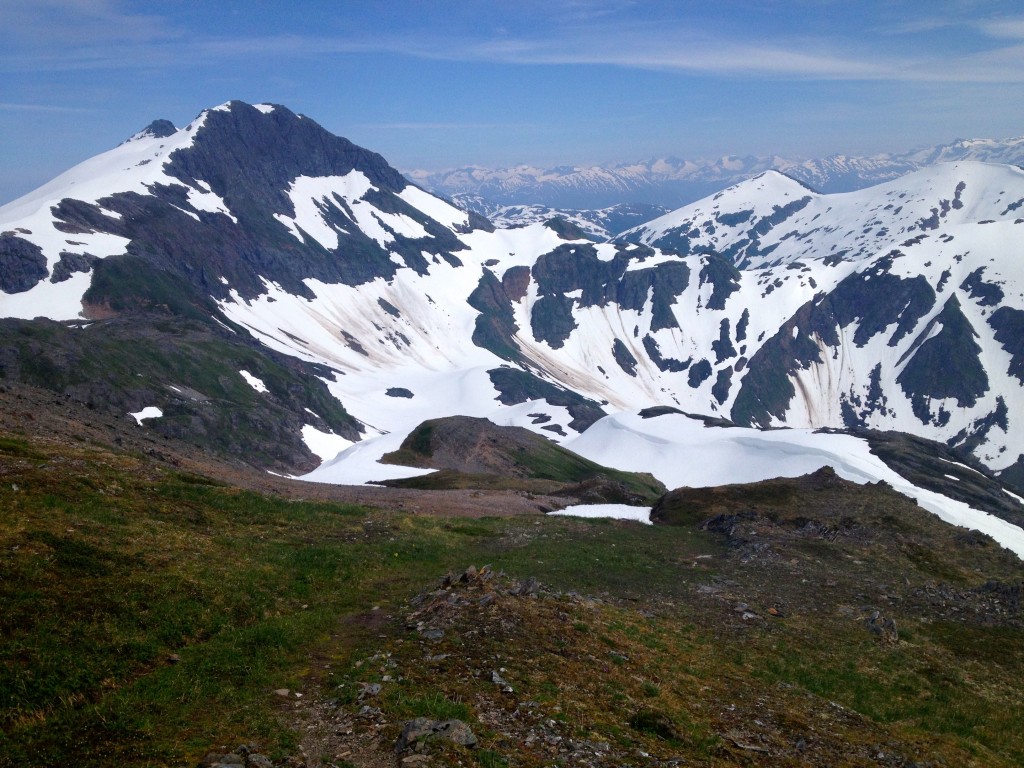
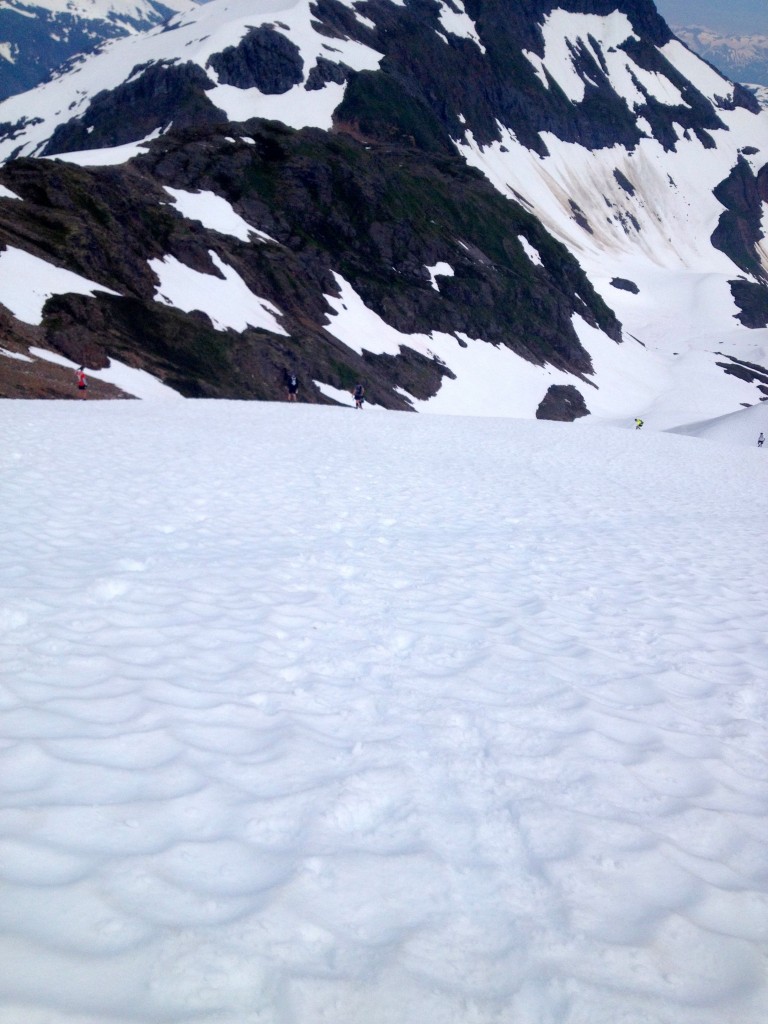
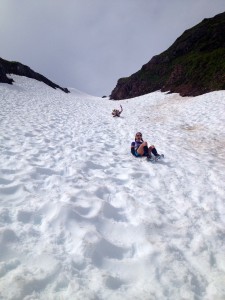
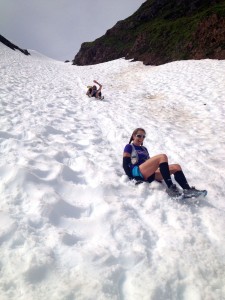
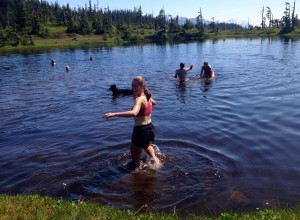
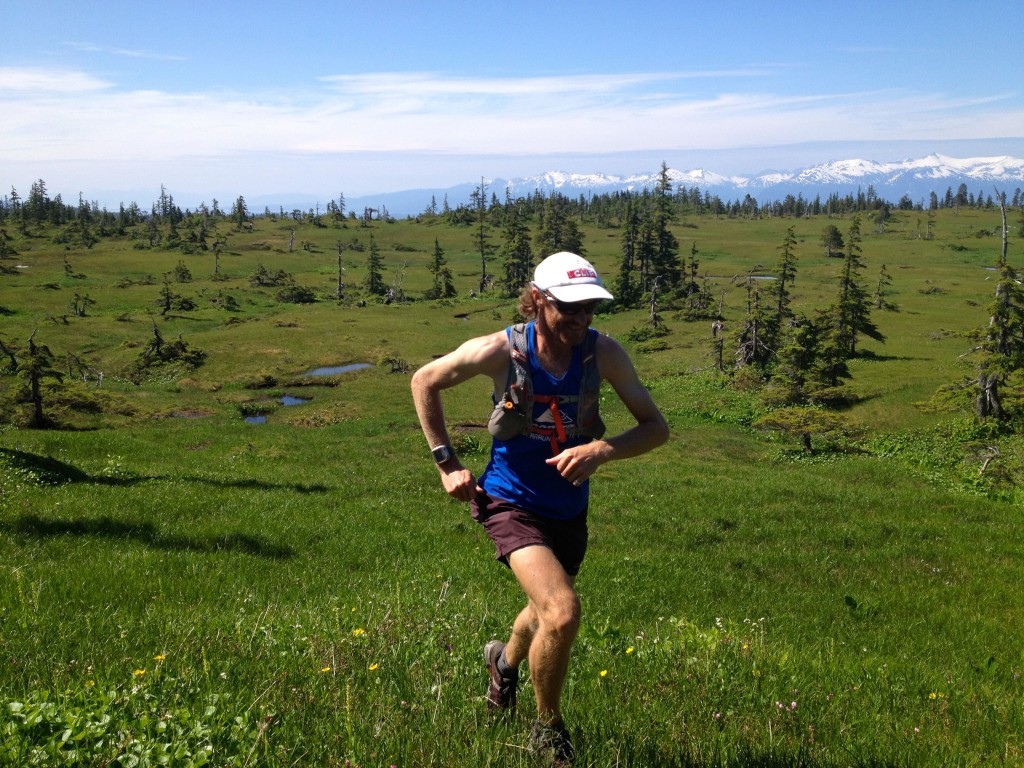
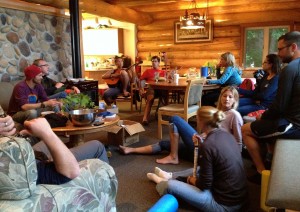
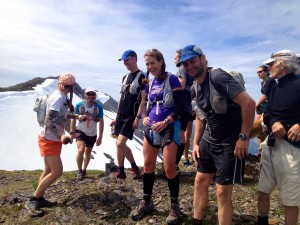
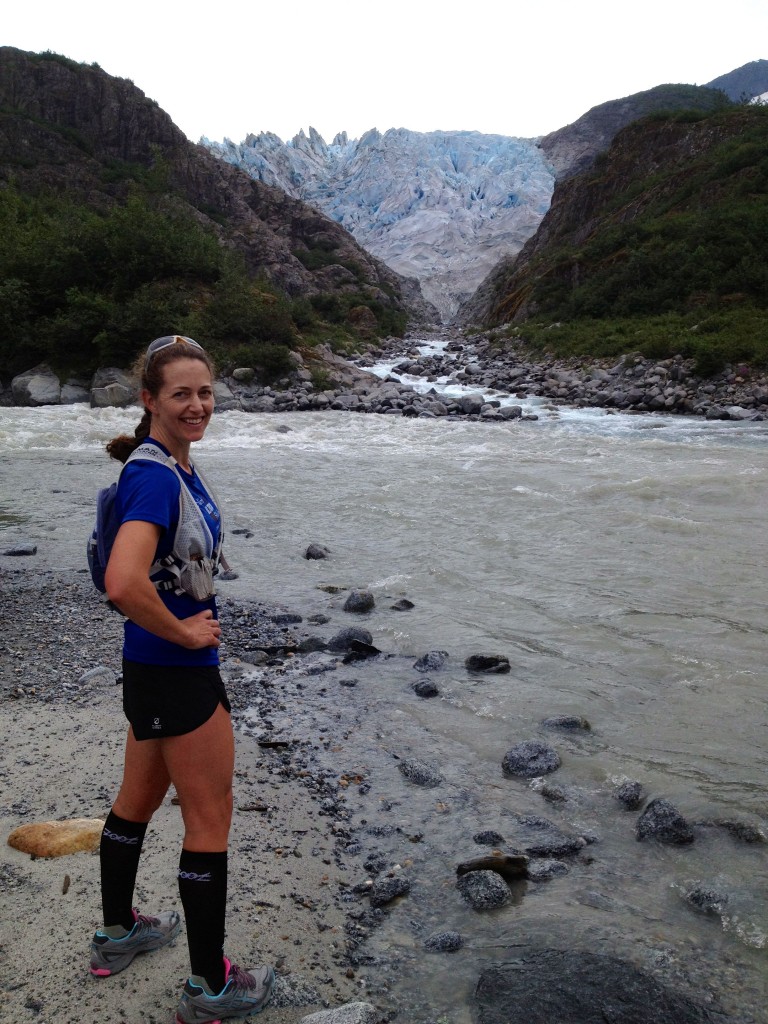
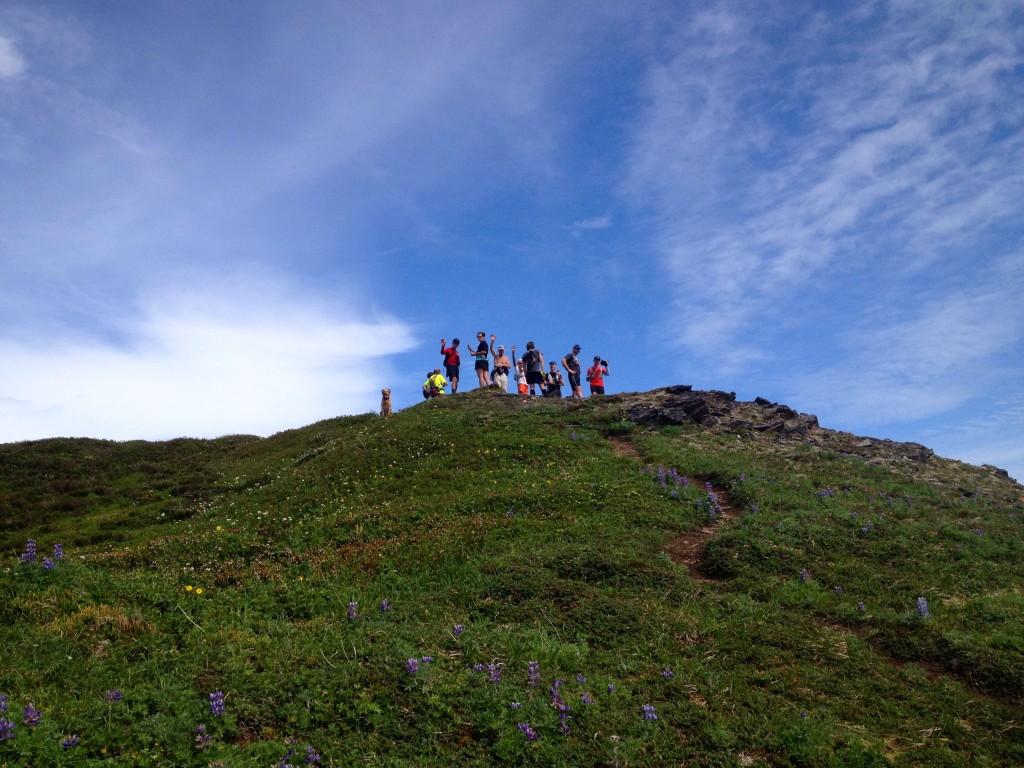
Wow! What incredible, rugged beauty. What a great week you’ve had! Glad you made it out safe and happy. PS-loved the Jersey stuff! oy…the accent…
Simply stunning. What a fantastic life adventure!!! Thanks for sharing the insight and pics.
Looks amazing!! What a fantastic experience
Oh, another place I have to visit. Thanks for sharing– looked like a blast.
Looks like the cross country camp I went to in high school…but a hundred times cooler. Great pictures and story (as usual)
Looks like a fun adventure! And some good training too! I would have loved to do something like this. Maybe in a couple years when my kids are a little older. Thanks for sharing!
Awesome. Roes’ camp sounds like something I should put on my bucket list. Thanks for sharing.
That stuff looks steep. Great report. Happy you got to experience Alaska!
Sounds like an awesome experience. Great photos of the land.
http://runrunnerrun.blogspot.com/2012/07/run-like-water.html
This blog post just made my day! You are living my dream, thank you for sharing your story and pictures so I can daydream while I sit at my desk.
Thank you for posting this. I found this to be quite inspiring. I loved the part about glissading down the snowfield, and I also love that picture with the trail running a few feet away from a cornice.